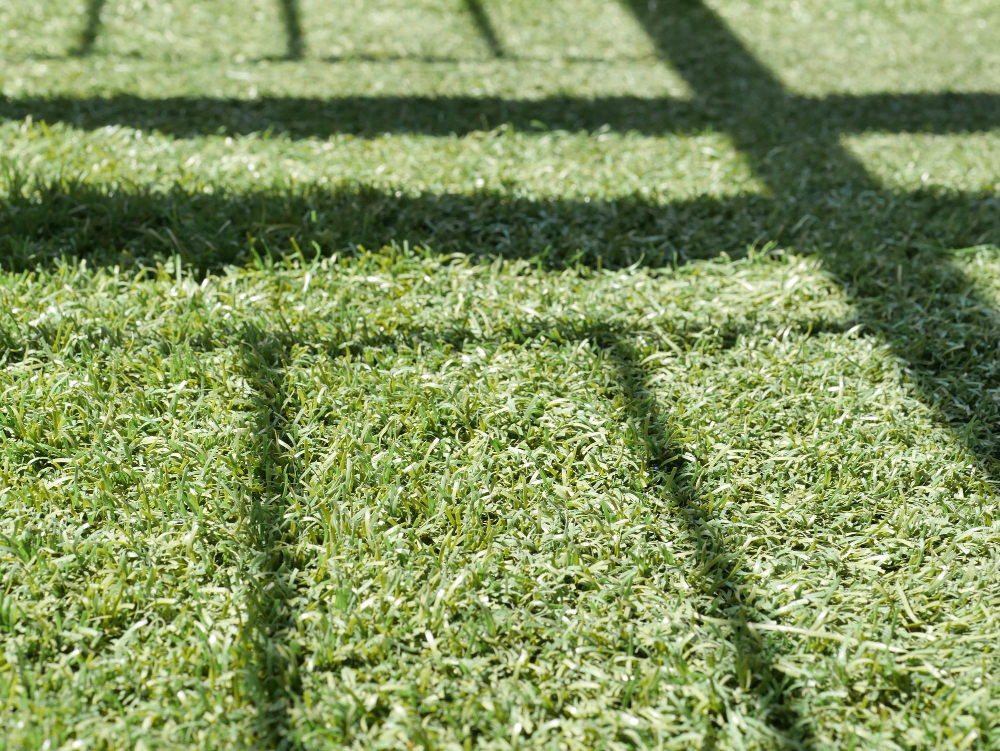- Lawn Turf
- Artificial
- Soil
- Timber
- Composite Decking
- Paving & Stone
Get In Touch With Our Experts Today!
Give us a Call! - Seed & Fertiliser
- Dressing
- Bark

September 01, 2025 Artificial TurfArtificial Turf Maintenance
Artificial grass has become a popular alternative to natural grass for homeowners seeking a low-maintenance lawn. It’s also a preferred option for smaller, urban gardens that might not have the space for an entire lawn or somewhere to store the lawnmower!
While fake turf offers multiple benefits, such as saving water, zero lawn maintenance, and providing a lush green carpet all year, it can also have its challenges. Especially if it hasn’t been laid correctly.
Whether you already have artificial turf or are considering investing in it, understanding the common problems associated with fake grass can help you identify and resolve them. In this article, our turf experts have pulled together the most common artificial turf problems and the best solutions to get the most from your garden.
Content Overview
Artificial turf is perfectly safe for animals. But while it provides a soft spot for them to do their business, their waste can cause serious problems if not dealt with. Not only do abandoned faeces look unsightly, but animal urine can also result in unpleasant smells – seeping into the layers below and leaving lingering odours and turf discolouration.
The Solution: First, make sure your artificial turf is laid correctly with a free-draining membrane underneath. You can also apply pet-friendly infills that neutralise odours. You should regularly wash down and clean your artificial turf, especially if there’s a particular spot your pets love.
During extreme heat waves, artificial turf can absorb and retain a lot of heat, especially if it is in direct sunlight. The problem with overheating is that the surface can become too hot for use. It makes it unsafe for kids and could even burn pets’ paws.
The Solution: Look for artificial turf varieties with heat-resistant technologies. You can also apply a light layer of sand on top, which helps reflect the heat. The quickest solution is shading your turf. Install awnings, umbrellas or planting hedges (obviously, these will take some time to grow) to keep your turf shaded and cooler in the sun.
As artificial turf is not rooted into the ground, over time, the edges can lift. Not only can this make your lawn look untidy, but lifted seams and edges can also create trip hazards or encourage your dogs to start digging!
The Solution: A general check of your turf every season should be enough to determine the condition of your fake grass and spot lifting edges. You can secure these edges with adhesive or garden pins. Alternatively, speak to a specialist to make sure there are no other issues.
“I shouldn’t get weeds with artificial turf, should I?” While fake turf suppresses weed growth, it doesn’t completely eliminate them. Weeds are hardy plants, and if there’s a way to get through, they will! Common spots for weeds to grow on artificial grass are around the edges or any small gaps between turf seams.
The Solution: Before laying your artificial turf, install a high-quality weed barrier. This will sit on the surface of your soil and help prevent weeds from coming through. Regularly check your turf for weeds and remove them by hand or use a chemical-free weed killer.
If you spot water collecting on the top of your artificial turf, it often means it has nowhere to go. Poor drainage can lead to water pooling, especially after a long and heavy downpour. If left, this can cause mould or mildew and unpleasant odours on your lawn.
The Solution: Again, it all comes down to proper preparation when installing synthetic turf. Ensure adequate drainage, such as a gravel sub-base, so that water can soak through. If water pooling continues, speak to a specialist to check that your turf was installed correctly.
Although we invest in artificial turf for its consistent bright green qualities, like anything, it will fade over time. Exposure to UV rays and heavy use will naturally cause your artificial turf to fade and become worn in high-use areas.
The Solution: There are artificial turf products that include high-quality and highly resistant fibres that can handle more use. You can also look for fake grass with UV-resistant coatings (like the artificial range at GDT&S). Again, shade structures will minimise UV fading, and you can move furniture around to avoid indentations.
When your artificial lawn was installed, it should have been rolled onto a flat surface. So, if you notice lumps, dips, creases or wrinkles in your lawn, it may be caused by something happening underneath. It could also be due to heavy wind or rain shifting your infill and creating an uneven surface.
The Solution: Regularly brushing your turf will help redistribute the infill and help relevel the lawn’s surface.
The most common reasons why your artificial turf smells are due to:
The Solution: Installation is key when it comes to installing fake (or natural) turf. Make sure your sub-base has adequate drainage, and that the membrane and infill promote healthy drainage too. If you have pets, rinse your grass regularly to avoid urine buildup, and if the smell persists, speak to our customer service team.
Artificial turf is an excellent option for those looking for a low-maintenance lawn. But if you don’t do your research, pick a poor-quality synthetic grass, and fail to install it correctly, you can come into serious problems. For any advice on picking the right artificial turf for you, get in touch with the helpful team at George Davies!
Artificial Lawn Care Tips for Winter